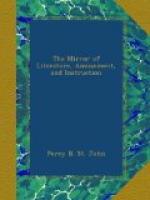The most ancient testaments among the Romans were made viva voce, the testator declaring his will in the presence of seven witnesses; these they called nuncupative testaments; but the danger of trusting the will of the dead to the memory of the living soon abolished these; and all testaments were ordered to be in writing.
The Romans were wont to set aside testaments, as being inofficiosa, deficient in natural duty, if they disinherited or totally passed by (without assigning a true and sufficient reason) any of the children of the testator. But if the child had any legacy, though ever so small, it was a proof that the testator had not lost his memory nor his reason, which otherwise the law presumed. Hence probably (says Blackstone) has arisen that groundless, vulgar error of the necessity of leaving the heir a shilling, or some other express legacy, in order to effectually disinherit him; whereas the law of England, though the heir, or next of kin, be totally omitted, admits no querela inofficiosa, to set aside such testament.
Alfred the Great made a will, wherein he declared, in express terms, that it was just the English should be as free as their own thoughts.
P.T.W.
* * * * *
THE COSMOPOLITE.
DANCING.
(For the Mirror.)
Dancing is defined to be “to move in measure; to move with steps correspondent to the sound of instruments.” But there are other species of dancing—as
-----------------for three long months To dance attendance for a word of audience:
and to dance with pain, or when, as Lord Bacon says, “in pestilences, the malignity of the infecting vapour danceth the principal spirits.” The Chorea S. Viti, or St. Vitus’s Dance is another variation, said to have once prevailed extensively, and to have been cured by a prayer to this saint! whose martyrdom is commemorated on June 15. It may not be generally known that a person afflicted with this species of dancing can run, although he cannot walk or stand still. Another and a more agreeable species is to lead the dance, an unjust usurpation which is practised in a thousand other places beside the ball-room.
According to the mythologists, (authorities always quotable, and nobody knows why,) the Curetes or Corybantes, a people of Crete, who were produced from rain, first invented the dance to amuse the infant Jupiter—with what success he danced we know not, for when a year old he waged war against the Titans, and then his dancing days must have terminated.
A history of dancing is, however, not to our purpose; but a few of its eccentricities. It occurs in the customs of all people, either as a recreation or as a religious ceremony—held in contempt by some, and in esteem by others. David danced before the ark; the daughters of Shiloh danced in a solemn yearly festival; and the Israelites, (good judges) danced round the golden calf.




